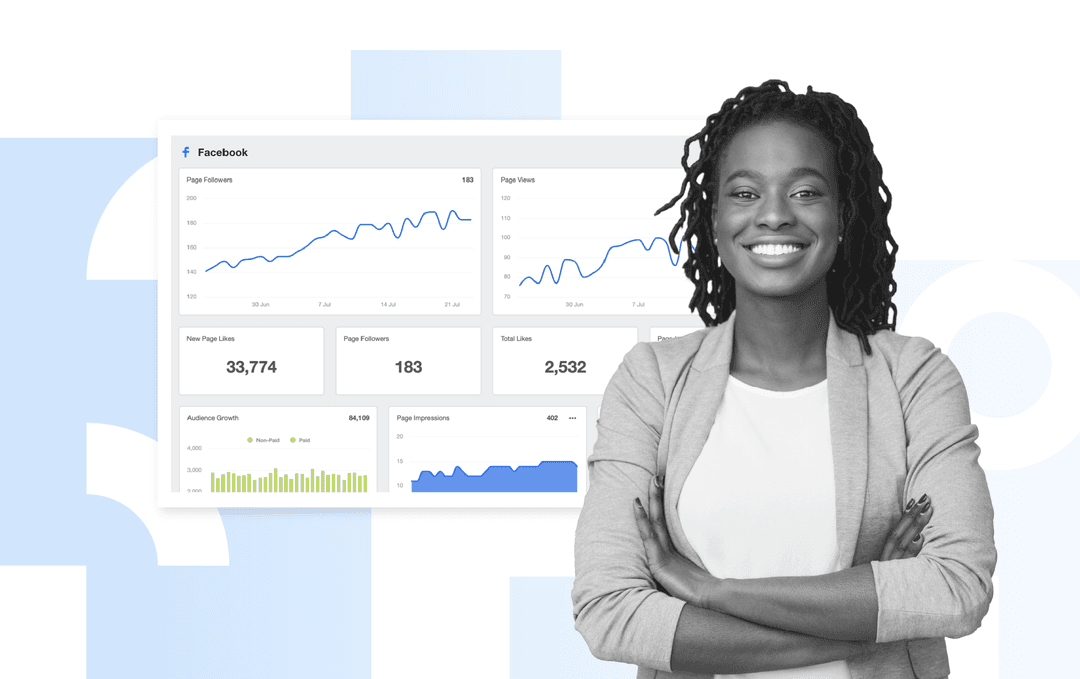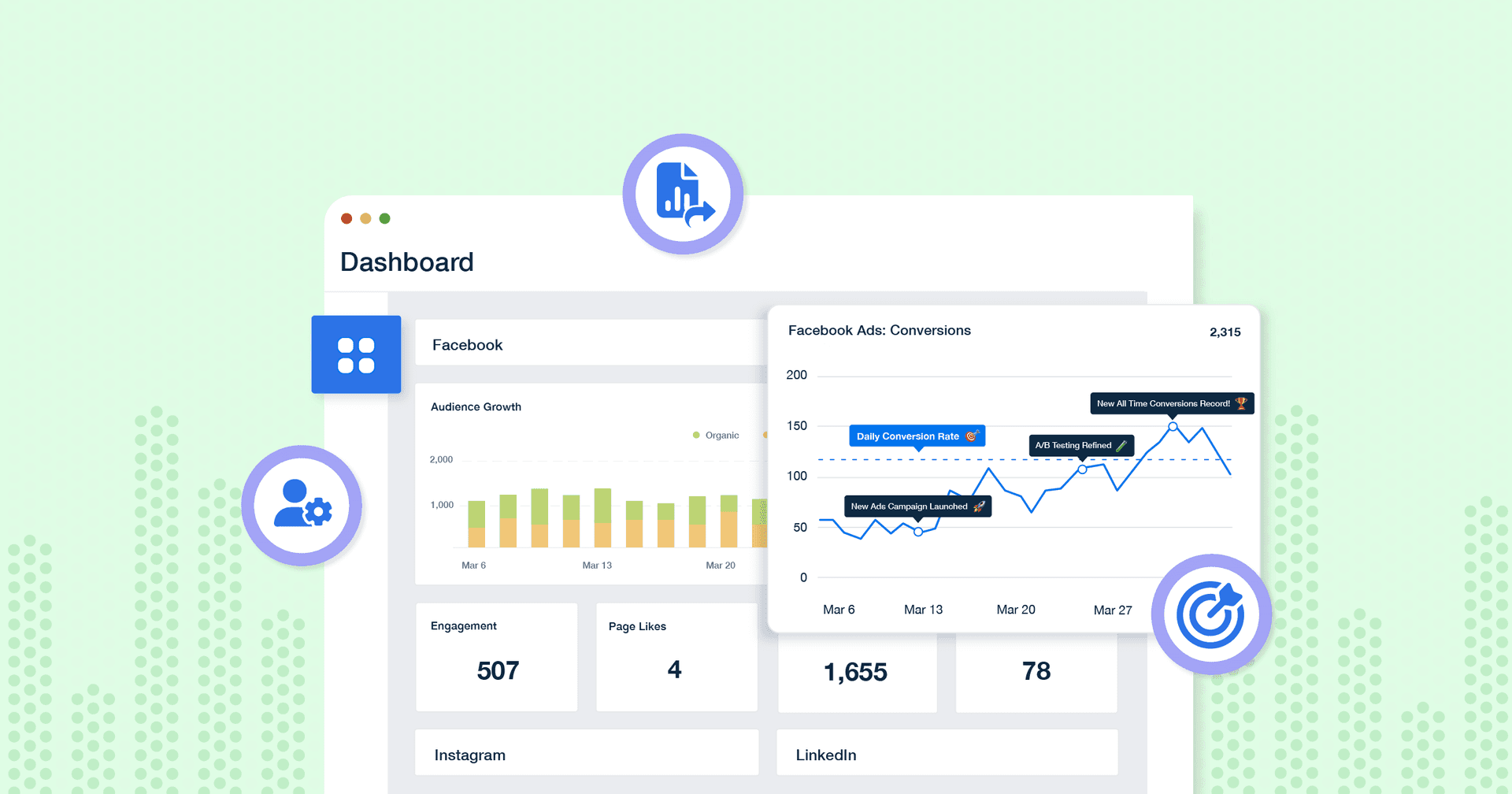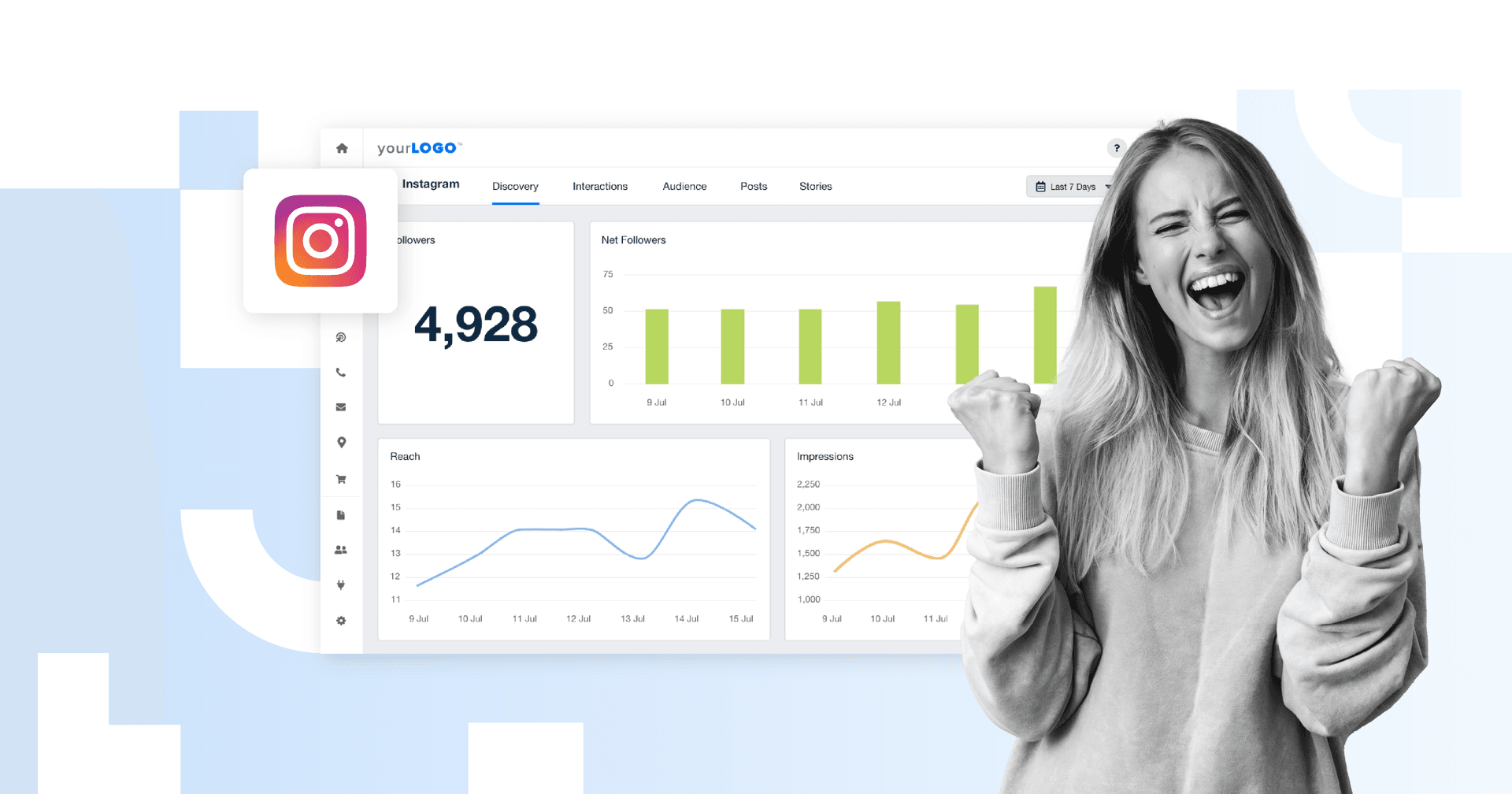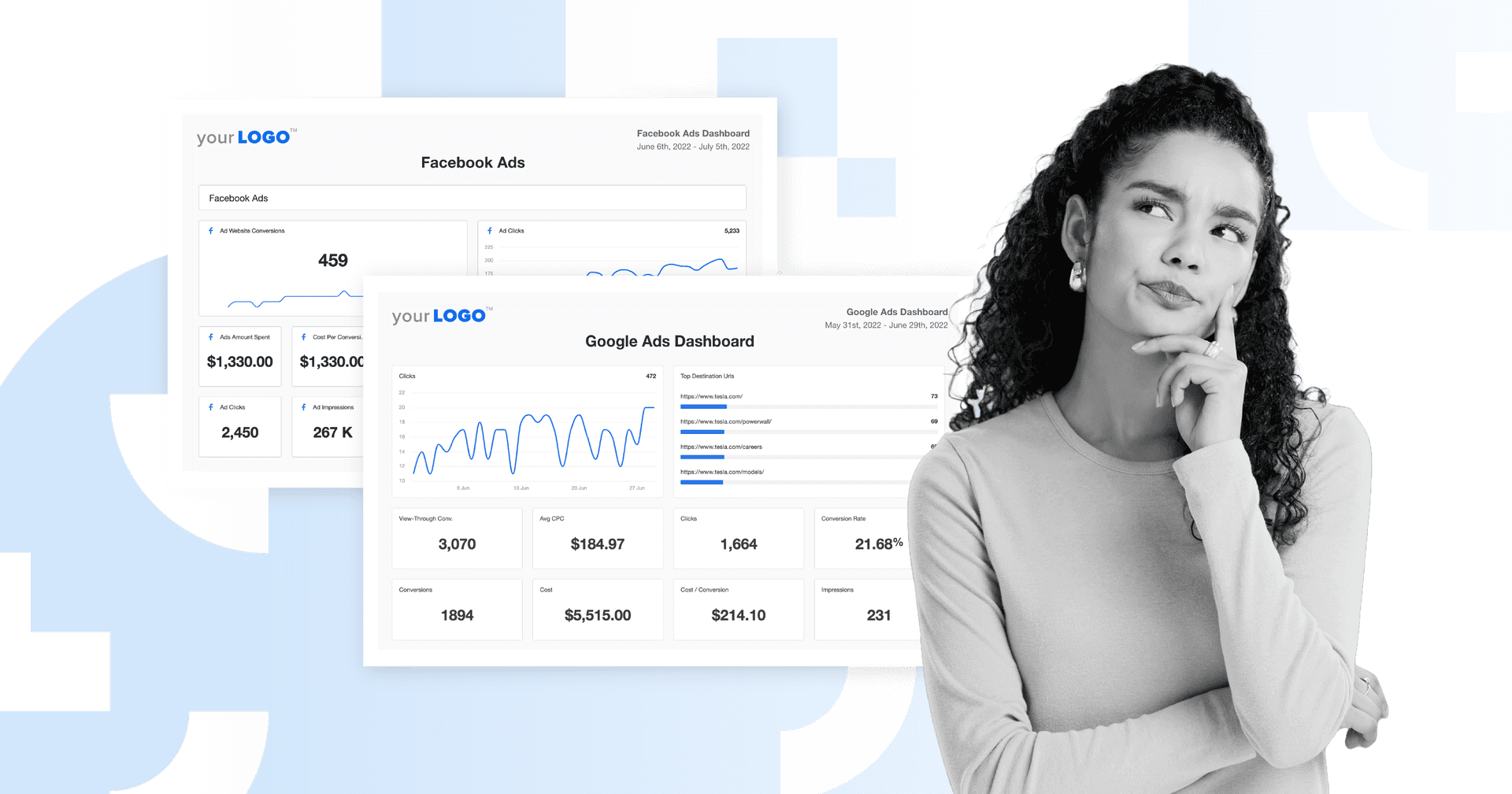Table of Contents
QUICK SUMMARY:
Facebook metrics are quantitative measures used to assess the performance of Facebook campaigns. These key performance indicators (KPIs) include engagement rates, reach, impressions, click-through rates, and conversion statistics. Tracking Facebook metrics provides insights into audience behavior, content effectiveness, and ROI, enabling agencies to fine-tune strategies for better engagement and results on Facebook. This article outlines which Facebook metrics to track and which matter most.
Facebook means business. It gives your marketing agency invaluable tools to understand target audiences, get your clients in front of their customers, and connect with Facebook users on a more personal level.
As a marketing agency, it's your job to understand what is (and is not) working as you craft your client’s content. And we all know that posting on Facebook and hoping for the best won't drive success.
Social buying continues to rise, with global consumers expected to spend $1.37 trillion via social platforms in 2025. So, there’s no time to let up on your clients' social media marketing efforts. If anything, it's time to level up on your social media analytics at scale.
Read on to discover the 17 Facebook metrics that matter most and how to stay on top with dashboards and reports that save you hours otherwise spent on manual reporting.
Why analyzing Facebook metrics matters
Facebook remains one of the most preferred social media platforms for the 35-44 demographic and is still the world’s most-used platform, with YouTube, WhatsApp, and Instagram following close behind.
“It’s an incredible platform to understand the hooks and messaging that truly drive the results you’re looking for,” says JC Polonia, Founder of Digitality Marketing.
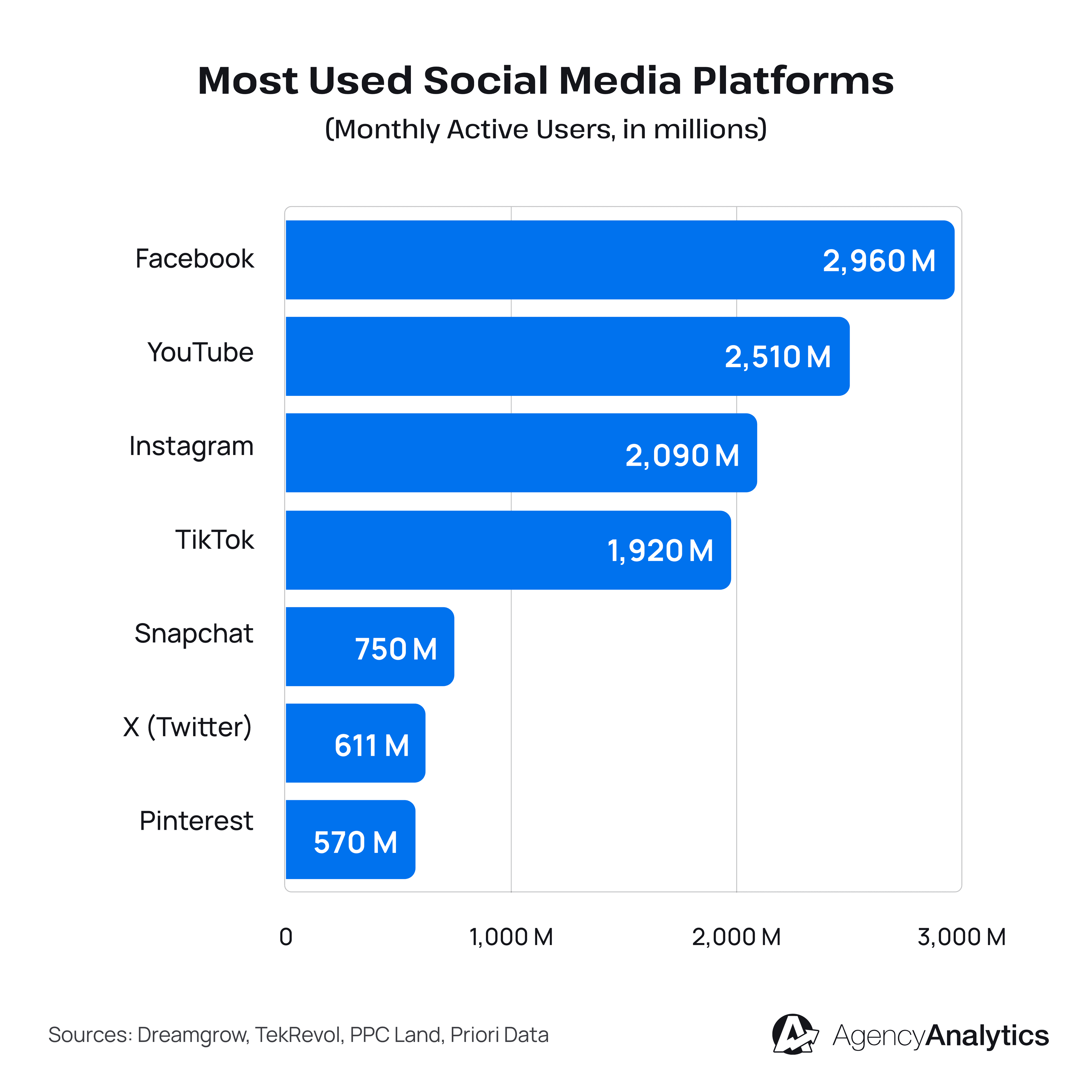
And when it comes to spending money and ROI potential for your clients, Facebook is the second most trusted social commerce platform after YouTube.

What to ask yourself before tracking a metric
Is it relevant?
Does it match your client’s business goals, so that if you succeed in this metric, it will translate into, say, more referral traffic?
Is it measurable?
This is obvious, as you need to be able to track the metric. But how will you track it, what will you benchmark against, and how often will you measure it?
Is it progressive?
Highlighting improvement over time in your Facebook reports is key to showing your clients the value you’re bringing to their business. Can you reliably measure this over months to track your client’s progress, and will it be irrelevant in a year? You’ll need to assess the lifetime of each metric and know when it’s time for an update.
Is it insightful?
Does the metric provide enough information to improve your client’s Facebook campaigns? In other words, does it provide actionable Facebook insights?
Does it stand alone?
Is the metric alone enough to measure, or does it depend on too many other metrics that can cause lag?
Is it aligned?
If the metrics you’re tracking don’t match up to your client’s business goals, then why track them? Ensure you decide on metrics with your clients and stakeholders early on. This brings us to the next point...
Is it standardized?
Ensure that your client’s team and your agency are using the same definition for the metric. Otherwise, results won’t translate across departments and will result in lots of data that can’t be reconciled into clear reports.
Is it game-proof?
Are there loopholes where the metrics can be fudged to show a more preferred result? If so, can you easily cross-reference this metric to ensure your agency is providing accurate data?
Does it have an owner?
Who is in charge of this metric? Who will be responsible for all the marketing activities that contribute to improving it, tracking it, and making adjustments to move the needle in the right direction?
While your answers might not check off all those items, ensure you’re carefully considering the metrics you choose to track with a big-picture and goal-oriented mentality.
17 most important Facebook metrics to track
“Facebook's reworked PPC and content creation tools have made identifying and reaching your target audience easier than ever,” says Adrian Rivera, Director of Marketing at Advanced Outdoor Solutions.
But what Facebook metrics will help you target the right audiences, capture new leads, and get referral traffic for your clients? What Facebook ads metrics are most and least important in terms of your clients’ business goals?
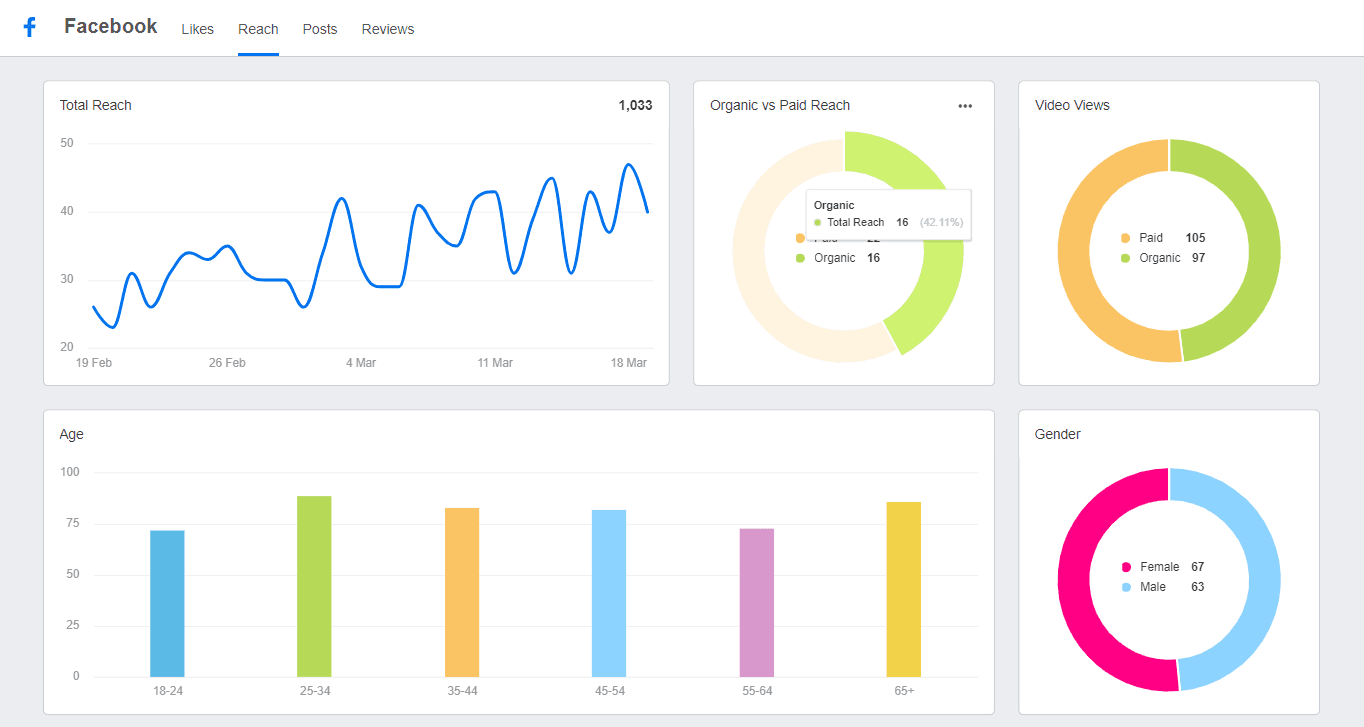
Visualize all your clients' real-time Facebook metrics from a live dashboard. Flip them into client-ready reports in minutes. Try AgencyAnalytics free for 14 days!
In this section, we'll discuss the 17 most important Facebook metrics and how to track them. We’ve divided these into five groups:
Let’s dig in.
Facebook page & post metrics
1. Reach
Facebook page and post reach is the number of people who view your client’s business page or post. It is counted only when a post (or ad) reaches someone. Organic reach, for instance, tells you how many of your client’s contacts have seen their post (as opposed to the total number of people, which would be Total Reach).
Why track reach? Reach measures how many people are interested in a brand, and also helps you understand whether you’re targeting the right people with the Facebook posts you’re publishing. It’s more intent-focused than impressions because it indicates that they’ve actually seen it.

Where to find it: AgencyAnalytics’ Facebook dashboard makes it easy to track Reach. Choose widgets and how to represent them graphically to visualize Page Reach, Post Reach, Organic Reach, and Total Reach.
Additionally, track reach in the Facebook report template to see more granular details on demographics, such as the top countries, cities, and languages reached, as well as the age and gender breakdown.
2. Post Impressions
Impressions tell you the number of times your client’s post has been viewed on a person’s Facebook timeline. They tend to be higher than reach.
Why track impressions? Brand awareness is one of the leading goals for a business wanting to drive new customers. Tracking this metric lets you know whether your client’s content is reaching its Facebook followers and target audience, so you can continue to drive impressions and boost the brand’s visibility.
If you're going to make a Facebook page, do it for the community, not to promote your business. People aren't interested in befriending a business, but they do want to know about things that impact their lives.
Joeri Vanhamel, Head of SEO & Marketing, Succeed Digital
Where to find it: Apart from the Facebook dashboard mentioned above, impressions are also tracked in our Facebook report template. Drag-and-drop: impressions, page impressions (the number of times any content from or about your client’s page entered a person’s screen), and unique viral post impressions.
3. Engagement
Engagement metrics measure how your client’s audience interacts with their page or post. This includes Clicks, Shares, Comments, Reactions, and Likes.
Why track engagement? Knowing what content drives more engagement will help you tailor your client’s content to guarantee future engagement, guarantee that what you’re putting out there is resonating with their audience, and make it more likely to show up across peoples’ newsfeeds.
We care most about link clicks. Quite often we are sharing website content or news articles that we want people to engage with, so we can boost a client's website traffic. Link clicks indicate that someone has been interested enough in the content to click through.
Ellen Hedley, Co-founder, Vida Creative

Where to find it: Engagement analytics are found in your Facebook dashboard and report in AgencyAnalytics. The dedicated page in your report breaks down reach by demographic data so you know more about your active audience.
4. Engagement Rate
Engagement rate is the ratio of interactions to a Facebook post to the number of Followers the page has:
(Total number of engagements / Total reach ) * 100
Why track engagement rate? Engagement rate tells you how interesting posts are to your client’s audience. If you have high impressions but a low engagement rate, it means the content needs improvement. The time you post can impact the engagement rate, so if you’re getting low impressions but high engagement, it’s worth looking at posting times.
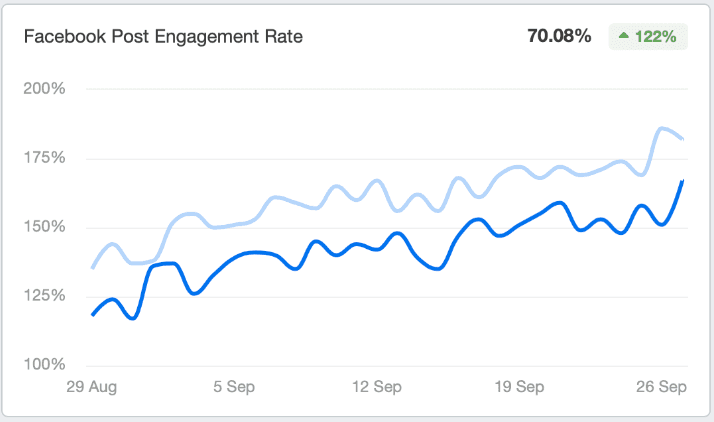
Where to find it: The engagement rate is already calculated in AgencyAnalytics. Simply add the widget to your dashboard or report, and you’re set! It’ll even show you how your client’s engagement rate is trending.
5. Page Likes & Followers
Page likes and followers are the number of people who want to know what your client’s brand is up to.
Why track page likes and followers? It indicates how interested people are in a brand or company. It’s easy to put too much emphasis on them, however. Don’t just rely on this because it’s not a standalone metric–alone, it’s a vanity metric. But combined with your client’s engagement and impressions, you’ll have a better idea of their brand reach. Generally, you’ll want to show your clients how their page likes and followers are growing.

Where to find it: Showcase consistent page growth from your AgencyAnalytics dashboard and reports by presenting the number along with the line graph to show how it’s trending.
Agency tip: Digitality Marketing’s founder recommends reverse engineering your client’s pages and advertising around what their business’s long-term goals are.
Now, let’s look at paid metrics in particular.
Facebook ad metrics
6. CPC
Cost-per-click is how much you pay Facebook for each click on an ad. It’s an indication of intent.
7. CPM
CPM is the cost per thousand impressions of an ad. This is more relevant to brand awareness campaigns.
8. CTR
Click-through rate is like an engagement metric for Facebook ads. It’s calculated by the number of clicks on an ad, divided by the number of times it was shown. It’s good to keep a close eye on the average or median CTR compared to industry benchmarks when you want people to take action on your client’s ad. If the client’s goal is to create brand awareness, then CPM is more important than CTR.
9. CPA
Cost per action is specific to online advertising campaigns pushing for a button click. This could be for an app install, a booking, or other specific conversion events.
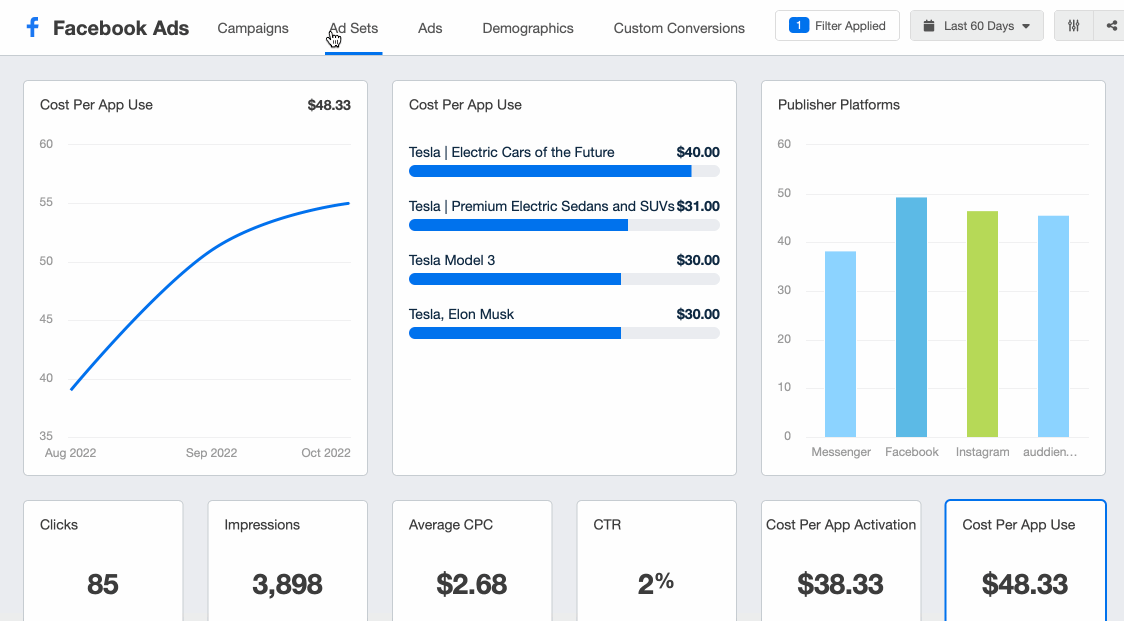
Where to find Facebook Ads metrics: You’ll find the metrics above and more in your Facebook Ads Reporting tool to give a full-picture report on your client’s Facebook ad campaign performance in an easy-to-use Facebook Ads report template. You'll also find relevant Facebook Ads Benchmarks to evaluate performance.
Depending on your client’s ad campaign goals, you’ll want to track other metrics in addition to the above. For the full list, check out our article on Facebook ads metrics to track–and where to find them. There are 11 of them on our list!
Facebook brand awareness metrics
10. Referral Traffic
Facebook referral traffic measures the number of times a visitor landed on your client’s website from their Facebook page.
Why track referral traffic? Referral traffic tells you whether your client’s posts are effectively driving traffic to their website or landing pages. If your client’s website has lots of product links or blog articles on their website, you’ll want to know how they got there.

Where to find it: AgencyAnalytics’ Google Analytics reporting integration makes it easy to combine Facebook metrics alongside other website data from Google Analytics.
Easily add this widget to your dashboards or reports to highlight traffic sources coming from social media.
11. Follower Demographics
As of March 2024, Meta removed demographic breakdowns for post reach and engagement. However, you can still access follower-level demographics in Meta’s native tools, which include audience insights like age, gender, country, city, and language.
Why track follower demographics? “The ability to identify your ideal customer and remarket to that specific segment is extremely lucrative to high-volume agencies within a specialized industry,” says Rivera, Director of Marketing at Advanced Outdoor Solutions. These insights help shape content strategy, audience targeting, and creative messaging.
Where to find it: Go to Meta Business Suite → Insights → Audience to view follower demographics. You’ll find visual breakdowns by age, gender, top cities and countries, and primary language.
Only share content that is going to interest your audience. Before you post anything, ask yourself, will my client (or potential client) find this helpful? If the answer is no, go back to the drawing board to drum up some better ideas!
Ellen Hedley, Co-founder, Vida Creative
12. Share of Voice
Your SoV measures how much a brand is being mentioned online.
Why track Share of Voice? Competitive analysis is key to staying ahead of the curve and ensuring your clients take up their fair share of the online space.
Where to find it: You can measure your share of voice using social listening tools. Calculate it with the formula:
Share of Voice = Your brand metrics / Total market metrics
Facebook video metrics
13. Video Engagement
This type of Facebook video analytics includes reactions, shares, and comments to a Facebook video.
Why track Facebook Video engagement? You’ll need to track video engagement just like you do with posts to create better videos that instigate a response from your client’s audience.
14. Audience Retention
This measures how long a person spends watching a video.
Why track audience retention? Audience retention is a measure of how interesting your client’s video is to the viewers. If you’re busy making minutes-long videos and people tune off at the first 30 seconds, it’s a sign to shorten them or switch up your video marketing strategy.
Facebook group analytics
15. Engagement
This metric tells you when your client’s Facebook group members are most active. It also measures Comments, Posts, and Reactions.

Have a particular engagement target for a client? Create a custom goal that tracks your agency's progress toward that goal automatically with AgencyAnalytics:
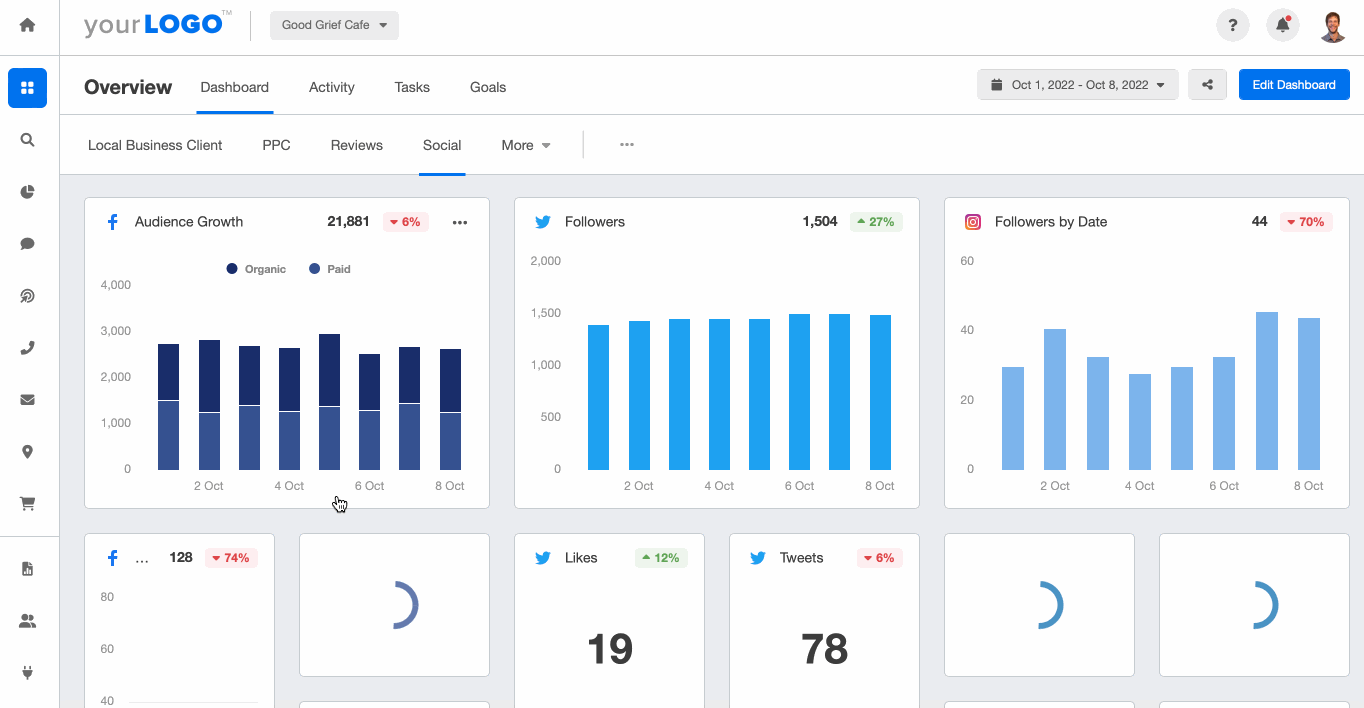
Why track group engagement? Groups are high-intent places for your clients to reach their target audience–and existing customers–directly. Know what types of things group members are most interested in, and time posts to when the community is most active.
16. Growth
Facebook Group growth shows how the number of members is growing over time.
Why track group growth? You’ll want to know how your community-building is going and how well your client’s audience is engaging with their content.
17. Top Contributors
This is the list of people who engage the most within your client’s Facebook Group.
Why track top contributors? These are your client’s unofficial brand ambassadors–you’ll want to respond to them, reach out, and rely on them to keep engaging. You might even ask them if they would be interested in moderating some conversations.
Other Important Metrics
Sentiment
Facebook doesn’t provide built-in sentiment analysis in Meta Business Suite or Facebook Ads Manager. To track audience sentiment—positive, neutral, or negative—you’ll need to rely on social listening platforms.
Why track sentiment? Sentiment provides insight into how people feel about your client’s brand, messaging, and campaigns. Whether it’s excitement, frustration, or support, monitoring sentiment helps you detect PR risks early, track brand health over time, and shape how your Facebook strategy responds.
Where to find it: Use social listening tools like Brandwatch, Sprout Social, or Hootsuite Insights to analyze Facebook comments, mentions, and conversations at scale. These social media platforms use AI and natural language processing to categorize sentiment and identify trends over time.
Relevance-Based Ad Rankings
Meta no longer uses a single “Relevance Score” to rate ad quality. Instead, it now breaks this down into three separate ranking metrics:
Quality Ranking: How an ad’s perceived quality compares to competing ads.
Engagement Rate Ranking: How expected engagement compares to ads competing for the same audience.
Conversion Rate Ranking: How likely the ad is to achieve its desired outcome compared to others in the auction.
Why track these rankings? These metrics help you understand whether creative, targeting, and messaging are competitive. If an ad isn’t performing well, these rankings indicate where to adjust: creative assets, call-to-action, or audience targeting.
Where to find it: In Meta Ads Manager, navigate to your client’s campaign, then view Breakdown → Performance Metrics → Ad Relevance Diagnostics. These rankings are available at the ad level and shown as Above Average, Average, or Below Average.
To summarize, here are the key Facebook metrics to focus on in each category:
Facebook Page & Post | Facebook Ad | Brand Awareness | Facebook Video | Facebook Group |
|---|---|---|---|---|
Reach | CPC | Referral Traffic
| Video Engagement | Engagement |
Impressions | CPM | Reach Demographics | Audience Retention | Growth |
Engagement | CTR | Share of Voice |
| Contributors |
Engagement Rates | CPA |
|
|
|
Page Likes & Followers |
|
|
|
|
Why comprehensive Facebook metrics reporting matters
So far, we’ve covered the most essential Facebook metrics for an agency to track–and how important it is to tie them to your clients’ goals. But how do you present the results to your clients in a way they can understand?
Clients care about profitability at scale. ROAS is a good starting point, but only if it goes hand in hand with large enough volumes. After that they will care about scalability.
Joeri Vanhamel, Head of SEO & Marketing, Succeed Digital
To show scalability, you need to show progress over time. And to do that, your client reports need to be consistent.
It's important to remember that although you may have been hired to perform a service for your client, it's equally important to get the client on board and act in collaboration with your efforts; the insight your client may be able to provide to you could be the missing spark to your creative and/or campaign.
Adrian Rivera, Director of Marketing, Advanced Outdoor Solutions.
Regular client reports are your number one collaboration tool for clients. They are key to keeping communication open, showcasing your value, and retaining them in the long run.
Less time struggling with data collection, more time growing your clients’ businesses
With all the metrics we’ve covered, you might be wondering: Is there a better way to measure Facebook metrics? To create and test out your content efficiently, you'll need a Facebook Analytics dashboard.
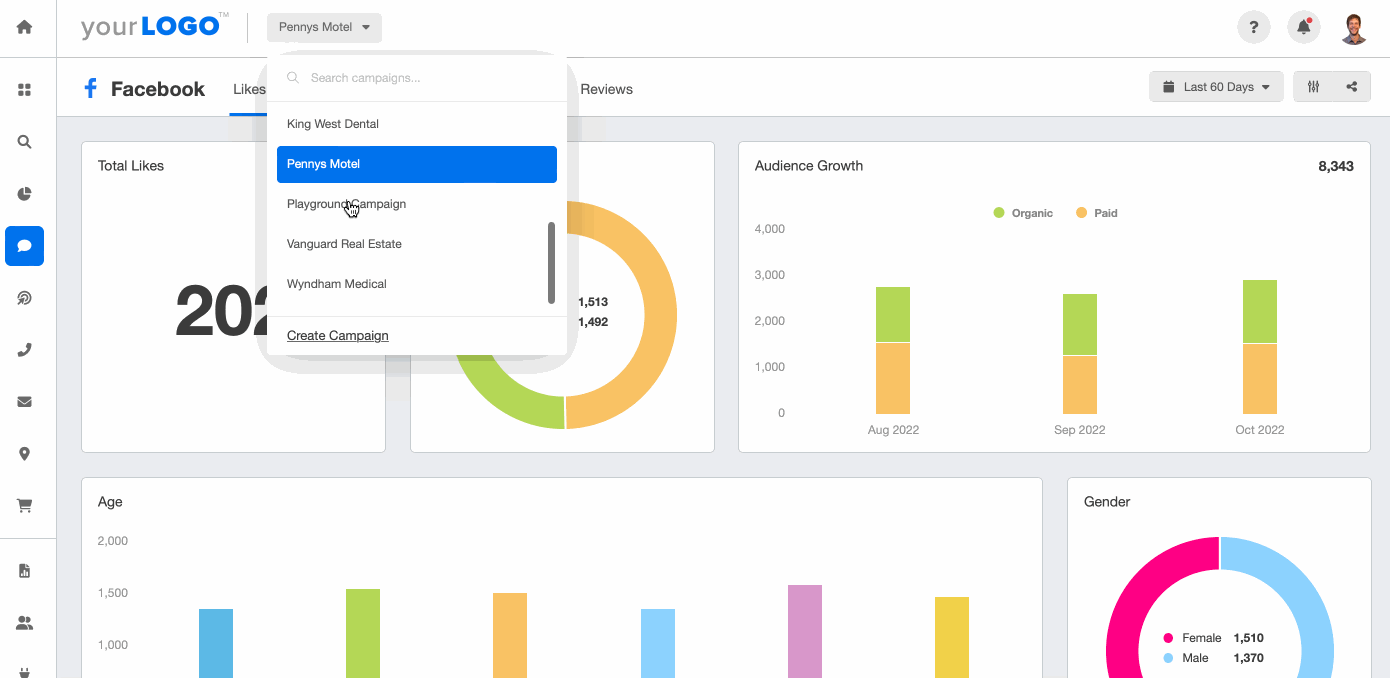
Close all your tabs and forget your logins! Easily switch between all your clients' real-time Facebook metrics from one streamlined platform.
There is no other platform that allows for creative testing at scale like Facebook. From small businesses to Fortune 100 companies, every business can benefit from the ability to iterate, move quickly, and learn what’s working for your advertising efforts.
JC Polonia, Founder, Digitality Marketing
Each client has unique goals and other marketing channels, apart from Facebook, so you’re also going to need a robust social media reporting tool to keep track of all your key metrics in a scalable way.
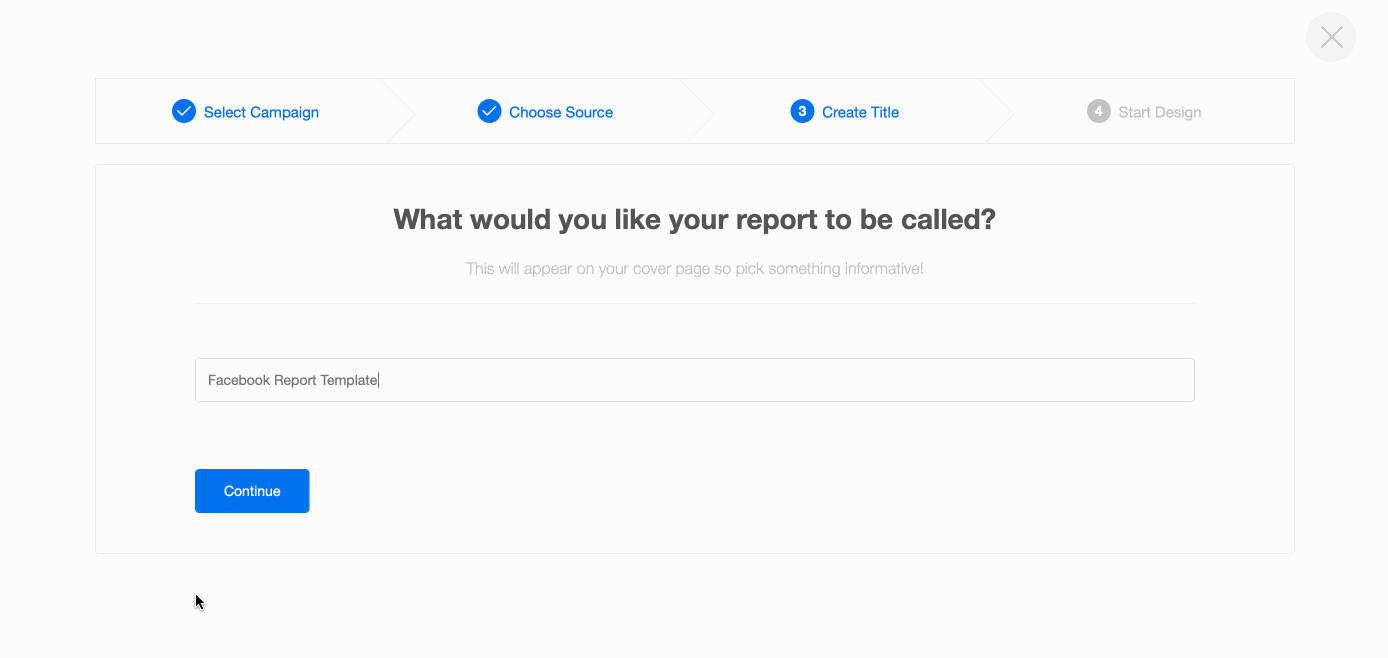
Try out AgencyAnalytics' white label dashboard for your internal team, and use the social media report template to pull in your client’s key social media analytics into one intuitive format that’s easy to share and easier to explain. Sign up for a free trial and start scaling your agency today.

Written by
Melody Sinclair-Brooks brings nearly a decade of experience in marketing in the tech industry. Specializing in B2B messaging for startups and SaaS, she crafts campaigns that cut through the noise, leveraging customer insights and multichannel strategies for tangible growth.
Read more posts by Melody Sinclair-BrooksSee how 7,000+ marketing agencies help clients win
Free 14-day trial. No credit card required.



